 February 11, 2011 6:00pm
February 11, 2011 6:00pm
Open Forum and Discussion on Tunisian Revolution
led by
Chadia Mansour
Blow Hall 334

 February 11, 2011 6:00pm
February 11, 2011 6:00pm
Open Forum and Discussion on Tunisian Revolution
led by
Chadia Mansour
Blow Hall 334
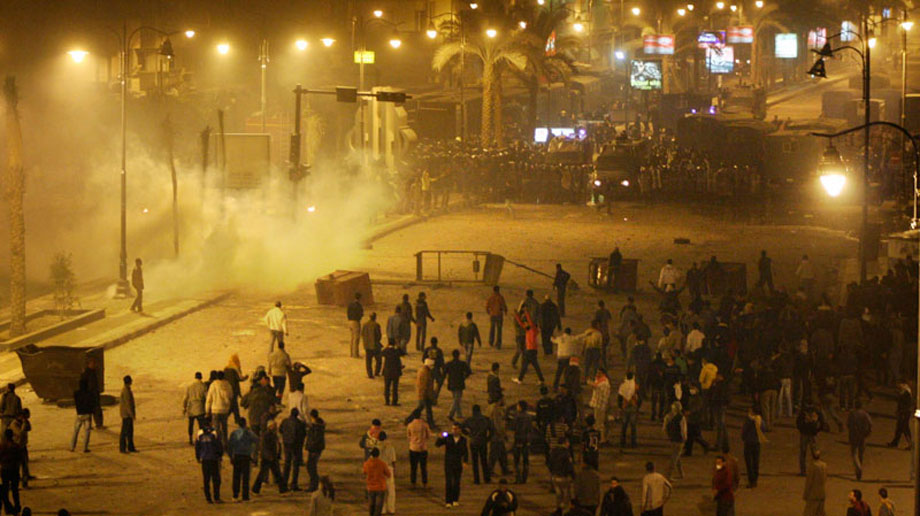
“This was a challenge. I definitely learned a lot about myself, but it wasn’t the challenge I was expecting,” he said.
Pence was one of hundreds of Americans who were evacuated after widespread protests both for and against Egyptian President Hosni Mubarak erupted across the country in January.
 John Pence ’12 (courtesy photo)
John Pence ’12 (courtesy photo)Pence began that month ready to spend a semester at American University in Cairo, studying Arabic and Middle Eastern politics. He was in the country for about two weeks, staying in a dorm in the Nile island area of Zamalek, before the protests began. The third-party study abroad program at AUC is not sponsored by William & Mary, but Pence was in touch with staff at the College’s Reves Center for International Studies throughout his time in Egypt.
“I loved it,” he said. “I met a lot of great people from all over the world, Egyptian students as well, and up until the protests began on the 25th of January, it was very peaceful.”
The night before the protests, Pence received text messages from some of his Egyptian classmates, telling him that he may want to stay in the next day because of planned protests. Monday, Jan. 25, thousands of Egyptians took to the streets, demanding that Mubarak step down. Over the next few days, Egyptian police clashed with the protesters and Egyptian troops and tanks were brought in to act as peacekeepers.
Throughout this time, Pence stayed in the Zamalek area, abiding by the curfew and staying informed about the events unfolding around him through satellite television and through his Egyptian classmates who lived in or around Cairo.
“I tried to stay away from everything because of my safety and because I’m not Egyptian. It wasn’t my fight,” he said. “I did feel for the people, and I still do.”
On Thursday, Pence went out to eat and was surprised to see that protests had reached the streets of Zamalek. The next morning, he knew the situation was really deteriorating.
“When I woke up and the phones were out and the internet was out, that’s when I was like, okay this is really serious,” he said. “This is the government really trying to show their iron fist.”
On Saturday, Pence watched as F-15s and military helicopters flew low over the city, and he heard that more tanks were being brought in.
“That’s when I knew this semester is not going to happen. Now it’s really about getting out.”
On Sunday evening, American University told students that the State Department was offering charter planes for American citizens who want to leave the country. Pence got on a bus with other students the next day to be transported to a hangar near the international airport in Cairo.
That bus ride was the first time that Pence had left Zamalek since the protests began – and the first time he saw the tanks on the streets and the burned buildings. At the airport, Pence joined hundreds of others in a long line for one of the charter flights.
“It was the line to freedom, basically,” he said. “Everybody was anxious to get out.”
After waiting in line for seven hours and leaving a pile of his belongings behind due to a one-bag restriction, Pence boarded a plane that was bound for Turkey. As he left Egypt, his thoughts were with the Egyptian people.
“Leaving, I felt bad for all the people that are out of a job now that we don’t have school anymore there,” he said. “You could see it on the faces of the Egyptian people as you were going to the airport. They would all say, ‘Oh, you’re going to be back, right? We’ll see you soon,’ and it was just sad.”
After a brief stay in Istanbul, which Pence used to see sites like the Blue Mosque, the William & Mary student finally left for the United States on Feb. 2.
“It was a long flight – a couple of flights – but I was glad to get home,” Pence said.
Now back in his home state of Indiana, Pence, a Spanish major, is working with the Reves Center to continue his semester in Argentina via the La Plata program.
Although Pence didn’t get to study in Egypt the way he thought he would this semester, he still learned quite a bit from his experience there, including “how fortunate we are in this country to have a somewhat stable democracy and also how dangerous the world is.”
Pence said it was really interesting to see the events unfold from both an insider and an outsider perspective. For instance, although the violent protests made the news, Egyptians were also trying to come up with peaceful and proactive solutions to some of the country’s problems.
“I know a lot of students who went out when the protests started and were encouraging people to clean the streets up and being proactive,” said Pence. “If (people are complaining) about how dirty the streets are in Cairo, let’s do something about it. But that message gets swallowed up by people who decide to cause chaos and havoc and fear.”
Via Facebook and other means, Pence has kept in touch with many of the students he met in Egypt.
“We only had a week and a half or two weeks with each other, but you go through something like that, you get to know people pretty well,” he said.
And as he prepares to leave for yet another country, Pence continues to monitor the situation in Egypt.
“I hope that there’s a peaceful resolution in sight soon,” he said.

Professor Rachel DiNitto and Student-Assistant Pam Kennedy recently set out on a new model for teaching Japanese culture courses at the College. Students in DiNitto’s courses have been producing much of their coursework as an online website. The project has had wide-ranging benefits, both inside the classroom and out. The idea is that DiNitto teaches the course and her teaching assistant, who in 2010 was upperclassman Pam Kennedy, would act as editor of the online content and student mentor. Visit the Post Bubble Culture Japanese Website Here or Watch the video below to learn more:
watch?v=4G-FGNvpmGU

 Ahlan ya gamaa`! (Hello gang!)
Ahlan ya gamaa`! (Hello gang!)
We are making progress on our Arabic textbook series.
We have completed and tested 4 chapters of volume one, and are working and testing the next 4 chapters this semester. It has been bumpy at times, but we are confident that in the end the project will be a significant advancement in Arabic language pedagogy.
In addition to the textbook for Modern Standard Arabic, we will be editing and testing the Moroccan textbook this summer in Meknes. This is a significant step, because it represents a serious attempt to deal with the issue of variation in Arabic language studies which until now has not been dealt with in a comprehensive fashion.
There are other projects underway at the present time that are trying to deal with this issue, but we feel that ours deals comprehensively with the three main issues that underlie the challenges that face learners and teachers of Arabic, namely: linguistic reality, linguistic dissonance, and linguistic choice.
1. Linguistic reality in Arabic must recognize the issue of variation–both the difference between the written and spoken varieties, as well as the geographic variation between the spoken dialects. We handle this by providing information on dialect variation in the Modern Standard Arabic textbook as part of the “linguistic culture” section of the text, as well as by providing related but freestanding textbooks on four of the main Arabic dialects: Moroccan, Iraqi, Egyptian, and Syrian.
2.Linguistic dissonance must be taken into account in designing materials which try to handle this reality: introducing too much variation at certain times and in certain contexts may be detrimental to the acquisition of any one of the varieties, and care must be taken in designing materials to take this into account.This is one reason why independent but related textbooks are provided for the four main dialects–separating the “codes” will allow attention to be paid to “accuracy” in each of them, which will facilitate the later development of native-like strategies for integrating the various codes.
3. Linguistic choice has to do with which varieties are chosen to be taught. Rather than replacing one linguistic ideology with another (Egyptian Arabic as the spoken “koine” instead of Modern Standard or another dialect), we believe that this choice should be left to the particular circumstances of each program and context of learning. For example, learning in country should demand that the local dialect be taught alongside the Modern Standard form. Outside of in country learning (i.e. outside of the Arab world), we should encourage introduction of dialectal varieties into the curriculum by providing good textbooks which will allow programs to offer dialect classes depending on the native dialects of their instructors.

 Dr. Robert Moynihan, the editor of the magazine INSIDE THE VATICAN, presents a talk “Moscow and Rome: latest developments in Vatican-Russian relations in a geopolitical context.” Dr. Moynihan earned his Ph.D. at Yale U and his BA at Harvard.
Dr. Robert Moynihan, the editor of the magazine INSIDE THE VATICAN, presents a talk “Moscow and Rome: latest developments in Vatican-Russian relations in a geopolitical context.” Dr. Moynihan earned his Ph.D. at Yale U and his BA at Harvard.

Story by Leslie McCullough
Luck, chance, or fate? Maybe some combination of the three. During a summer 2002 undergraduate research trip to South America, Sarah South Parks ’03 suggested an exploratory side trip to La Plata, Argentina. The rest is history.
 Sarah was finishing her junior year as a Hispanic Studies major and jumped at the chance to join her advisor, Professor Silvia Tandeciarz, and fellow student John Cipperly for a two-week research trip to Chile and Argentina, two nations emerging from brutal experiences with state terrorism. The students’ participation was made possible by a Borgenicht Foundation for Identity and Transformation Grant supporting faculty-directed student research projects.
Sarah was finishing her junior year as a Hispanic Studies major and jumped at the chance to join her advisor, Professor Silvia Tandeciarz, and fellow student John Cipperly for a two-week research trip to Chile and Argentina, two nations emerging from brutal experiences with state terrorism. The students’ participation was made possible by a Borgenicht Foundation for Identity and Transformation Grant supporting faculty-directed student research projects.
In preparing for the trip, Professor Tandeciarz asked Sarah and John to read A Lexicon of Terror: Argentina and the Legacies of Torture by Marguerite Feitlowitz. Sarah recalls being particularly interested in a chapter about the alarming number of children, students, and faculty who “disappeared” from the university town of La Plata, Argentina, during its so-called “Dirty War” (1976-1983).
“It was a terrible and secretive time,” says Sarah. “Thousands of Argentineans were arrested, imprisoned, and declared missing. People involved with the university and education were seen as a threat by the dictatorship, and many disappeared.”
Together the group visited “memory sites” (e.g., museums, monuments, bookstores, schools, and memorials) to document and analyze the role of memory in the re-construction of Chilean and Argentinean national identities.
Sarah expressed interest in visiting the sites of memory in La Plata that she’d read about. Although only a half-hour drive from Buenos Aires, La Plata at that time represented uncharted territory.
There, while visiting a memory site at an elementary school, the group noticed a poster for the Comisión Provincial por la Memoria (Commission on Memory), a nongovernmental organization dedicated to the study and dissemination of human rights abuses committed during the Argentinean dictatorship. The commission was set up to do the very thing Tandeciarz’s team was researching. It was an incredible find.
Sarah’s research focused on the children of the disappeared in Argentina, some of whom were adopted by military families and are just coming to discover their biological identity. Working with the Commission offered access to many invaluable resources. Later, Sarah reported her research findings in an academic paper she presented at a Modern Languages and Literatures colloquium.

“When we engage in collaborative research with students, the rewards can be endless,” says Professor Tandeciarz. “It was Sarah’s leadership that got us to La Plata. If there had been no grant, there would have been no students on this trip, and we never would have made this wonderful connection.”
Since the initial connection, Tandeciarz has helped to develop a strong relationship between the Commission and the College. As a result, William and Mary students from many majors have participated in a semester study abroad program in La Plata, the only one of its kind available there to U.S. college students.
“This semester program is unique in that it offers students the opportunity to take university courses while collaborating on a variety of human rights initiatives through internships at the Comission, thus bringing William and Mary’s service learning tradition into global education,” says Professor Tandeciarz. The funding structure of the La Plata program also has made it possible for Argentinean students to come to the College for short research trips, usually conducted over spring break in collaboration with William and Mary undergraduate students.
“I never could have guessed what this trip would turn into,” says Sarah. “It is neat to think about how this program is benefiting the lives of so many other students. In my opinion, one of the College’s greatest assets is the ability to maintain an environment that allows for such strong collaborations between students and faculty.”
Since receiving her master’s degree in social work in 2006, Sarah South Parks has worked with international adoption programs and Hispanic immigrant children who had been separated and subsequently reunited with their families. She is currently working in Williamsburg with The Barker Foundation, a private adoption agency, to provide counseling to women or couples facing unplanned pregnancy.

 “The Lighter Side of Russia” Thursday January 27, February 3, February 10 at 5 pm in Washington 301
“The Lighter Side of Russia” Thursday January 27, February 3, February 10 at 5 pm in Washington 301

 Professor Regina Root’s scholarship and role in Latin American fashion was the recent subject of a program on “Mujeres exitosas” (Successful Women) for a culture and education channel in Colombia. Program host Angélica Romero highlighted Root’s role as president of Ixel Moda (Latin America’s fashion congress that attracts designers and academics from around the globe) and work on sustainable design practices. “Mujeres exitosas” presented an interview with Michelle Bachelet the week prior to airing the interview with Root. To see the half hour program, see http://vimeo.com/17666775 (Note: There are brief pauses between program segments.)
Professor Regina Root’s scholarship and role in Latin American fashion was the recent subject of a program on “Mujeres exitosas” (Successful Women) for a culture and education channel in Colombia. Program host Angélica Romero highlighted Root’s role as president of Ixel Moda (Latin America’s fashion congress that attracts designers and academics from around the globe) and work on sustainable design practices. “Mujeres exitosas” presented an interview with Michelle Bachelet the week prior to airing the interview with Root. To see the half hour program, see http://vimeo.com/17666775 (Note: There are brief pauses between program segments.)

 There are more students enrolled in foreign language courses than any other department within the Arts & Sciences at William & Mary, making the College a leader in a nationwide trend that’s sweeping across higher education in America.
There are more students enrolled in foreign language courses than any other department within the Arts & Sciences at William & Mary, making the College a leader in a nationwide trend that’s sweeping across higher education in America.
According to the recent report, “Enrollments in Languages Other Than English in United States Institutions of Higher Education, Fall 2009,” released by the Modern Language Association (MLA), enrollments in languages other than English at U.S. colleges and universities have continued to grow over the past decade. They are also diversifying to include an increasingly broad range of language studies, says the report, the longest-running and most comprehensive analysis of the study of languages in higher education.
“The majority of students are not taking language courses because of the foreign language proficiency requirement, they’re taking language courses because of their interest in the particular subject matter, future career goals or their desire to learn another language,” said Professor Silvia Tandeciarz, chair of modern languages and literatures.
The new survey found that the study of Arabic registered the largest percentage of growth since 2006, with course enrollments growing by 46.3 percent. Chinese and Japanese enrollments also increased significantly, up 18.4 percent and 10.3 percent, respectively.
Tandeciarz, who teaches Hispanic Studies courses, said William & Mary also has seen tremendous enrollment increases in those language areas. Departmental data shows that since 2005, enrollments in introductory Chinese increased by 27 percent and Arabic by 25 percent. Overall, the department has seen an 8 percent increase in lower-level courses, or an additional 155 students in the classroom.
Professor Rachel DiNitto, associate chair for educational policy for modern languages and literatures, said enrollments had increased so vastly “that a few years ago, we had one year in which there wasn’t a single seat open for incoming freshmen in any introductory language class in the whole department.”
Since then, the department has started enrollment management and now saves half the seats in every introductory language course for freshmen. They also added additional course sections to relieve some of the enrollment pressures, she said.
“The biggest demand is in 101 and 102,” said DiNitto, who also teaches courses in Japanese. “And, part of that is just a function of the numbers themselves because all languages have an attrition process.”
But with 75 percent of students coming to William & Mary having already met the foreign language proficiency requirement, Tandeciarz says there’s been a clear shift in the recognition of language and its importance as we transition into the 21st century.
“Students are not taking language courses because they need to or because they have to,” she said. “They’re doing it because they want to.”
Historically, Tandeciarz says there’s always been pressure to teach additional languages, mainly because of rising economies and a globally driven market.
“The university has to shift and respond to pressures from social movements, pressures from a changing world, so the academy today isn’t what the academy was 100 years ago,” said Tandeciarz. “We’re constantly shifting, re-thinking ourselves, reinventing what we do in light of what’s happening around us.”
And in today’s global climate students are learning more than one new language while in college. DiNitto said the department is tracking another new trend: dual languaging in either Chinese and Japanese or Chinese and Arabic.
“The dual language in Japanese and Chinese is a natural connection, especially because of the writing systems,” said DiNitto. “But Arabic and Chinese are completely different. China is becoming the world’s strongest economy and the government needs people who can speak Arabic, so to a certain extent students are covering their bases, but that’s a real commitment to study those two languages. It’s not just a passing fancy.”
Both professors agree that the main appeal of dual languages is that students have a broader scope and a wider view of a more globally connected world. One way to streamline the two would be for students to take the newly proposed major in Asian and Middle East Studies, combining Middle Eastern Studies with East Asian Studies and incorporating South Asian Studies. During fall 2010, the Educational Policy Committee voted to approve such a major, which is slated to go before a vote by the Faculty of Arts & Sciences this spring.
“Along with the study of the major languages of the region, the proposed Asian and Middle East Studies major will include courses on history, politics, religion, literature, fine and media arts, and expressive and ritual culture,” said Teresa Longo, dean for educational policy. “The interdisciplinary components of the curriculum are meant to provide students with a specialized knowledge of a vital region within Asia and to introduce them to cross-regional practices.”
While institutions are still figuring out how to balance the language needs of their students, they’re also experiencing another change on the language forefront: what type of student can they expect to enroll in language courses?
“For many years, the students who studied Japanese and Chinese were traditionally East Asian Studies majors,” said DiNitto. “Now, we’re getting more and more students who are business majors, chemistry majors, and majors from academic fields across campus. And they’re coming at language from a very different angle.”
DiNitto attributes the influx of students from various demographics and academic fields to an internationalized world that continues to diversify, and students who want to be prepared for global citizenship.
“Back in the 1980s, students got a business degree and regardless where you went, they just hired a translator and that was considered sufficient,” she said. “It’s no longer sufficient anymore, nor is it desirable.”
At William & Mary, Japanese enrollments in upper-level courses have increased 24 percent over the last five years, according to departmental data. The program has split the third-year class into two sections to accommodate the increasing number of freshmen entering with advanced language skills. Chinese has registered almost a 50 percent increase for its upper-level courses and now offers two sections of third and fourth year courses.
“The increases in upper-level courses are in response to high schools teaching those languages more regularly in comparison to the traditional languages taught such as French, German and Spanish,” said DiNitto.
It’s hard to imagine the future without considering the past: William & Mary is the first and oldest Modern Languages and Literatures Department in the nation. Its beginnings can be traced to a professorship established by Thomas Jefferson in 1777, said Tandeciarz.
“It’s challenging to stay on top and figure out what the needs are and how to best address them,” she said. “But, we recognize that it’s a shifting landscape and as we think about training our students for a more globally interconnected world, having these language skills is extremely important.”
One thing is for sure: the study of a language is just one small piece that is necessary when looking at our world.
“What students are really getting is a deep cultural understanding that is only available to them if they can read what people living in those parts of the world are writing, understand what they are saying, and identify with how they’re representing themselves and the issues they face,” said Tandeciarz. “It’s much more about cross cultural understanding and not simply that language skill – learning the language is really a first step, a tool for the work that we do.”
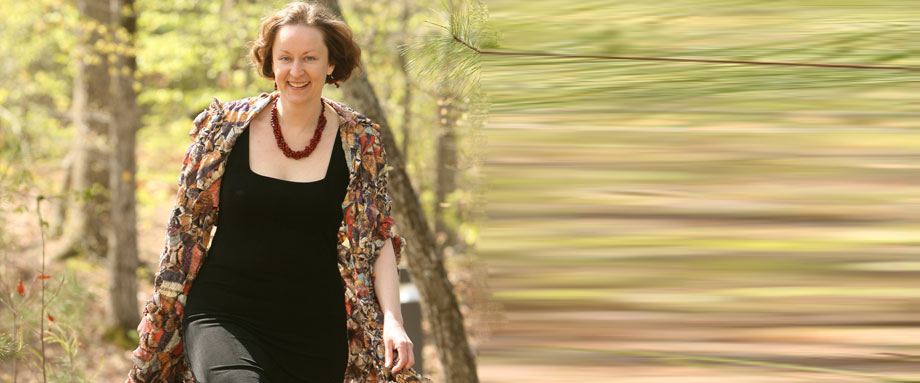
 ‘Couture & Consensus: Fashion and Politics in Postcolonial Argentina’ by Regina A. Root
‘Couture & Consensus: Fashion and Politics in Postcolonial Argentina’ by Regina A. Root
Story By Lillian Stevens
Couture & Consensus, a new book by Regina Root, offers a history of fashion and its influence on the political climate following Argentina’s revolution of independence in 1810. In her book, Root explains how dress served as a critical expression of political agency and citizenship during the struggle toward a new Argentine nation.
The result of an extensive archival study that took several years to complete, Couture & Consensus: Fashion and Politics in Postcolonial Argentina reveals how politics merged with dress to encourage creativity and (depending on the wearer’s ideology) to enforce or protest authoritarian practices.
“This book maps the search for a collective identity, or consensus, through material culture. At a time when the region was at war and the idea of an Argentine nation still seemed a dream, fashion became a creative language through which to engage the nation-building project,” says Root, Class of 1963 Term Distinguished Associate Professor of Modern Languages and Literatures.
There are five chapters, beginning with “Uniform Consensus” in which Root describes the often theatrical manifestations of conformity and rebellion. Root explains the divide between the Argentine Federalists (those who pledged loyalty to Juan Manuel de Rosas, an authoritarian leader) and the Unitarians who opposed the Rosas regime. Rosas, she writes, actually mandated a uniform for civilians in the province of Buenos Aires, while an 1832 decree established crimson as the “color of faith” for the Argentine federation. Unitarians wore green or light blue—when they could get away with it, Root says. When such colors were outlawed, Unitarians risked death when inserting political messages into their top hats.
 The second chapter, “Dressed to Kill,” is about female complicity during the push for independence from Spain. Here, Root gives voice and presence to the many nameless and overlooked women who participated actively in the war effort—women who constructed uniforms and who sometimes even donned them in order to fight during the various (ultimately unsuccessful) British invasions of Buenos Aires.
The second chapter, “Dressed to Kill,” is about female complicity during the push for independence from Spain. Here, Root gives voice and presence to the many nameless and overlooked women who participated actively in the war effort—women who constructed uniforms and who sometimes even donned them in order to fight during the various (ultimately unsuccessful) British invasions of Buenos Aires.
Then comes “Fashion as Presence,” the third chapter, which explores the meaning of exaggerated dress—from oversized skirts to giant hair combs called peinetones—in the quest for female emancipation. Peinetones, usually made of tortoiseshell and reaching one yard square, were worn by women of the 1820s and 1830s to distance themselves visually from the fashions and customs of Spain. By wearing massive skirts and intimidating headpieces, women also commanded a space of their own, effectively asserting their presence in public, Root says. These emblems of Argentine identity sometimes incorporated political slogans or patriotic motifs. “They definitely called into question the political vanity of 19th-century male leaders who had fought Spanish oppression, but then denied women their emancipation,” she said.
In the fourth chapter, “Fashion Writing,” Root demonstrates how easy it was for authors to elude authorities by masquerading their politics under the guise of entertainment prose. As a result, it became possible in postcolonial Argentina to regain control of the body politic by planting urban, democratic ideals within the pages of fashion magazines. In this chapter, Root recounts the liberating qualities of fashion at this pivotal moment of national reorganization and modernization.
The final chapter is titled “Searching for Female Emancipation.” Root gives voice to the political foothold women were gradually gaining. While revolutionary men gained political footing under the guise of writing articles about fashion, it was the women who felt empowered by their ability to finally speak their minds. Root calls on everything from storylines of novels to the history of the magazines to prove this point.
In the book’s epilogue, Root discusses how the tradition of mixing fashion with politics continues in modern-day Argentina. Among the examples she cites are the shawls of the Mothers of the Plaza de Mayo. These are the mothers of los desaparecidos—the thousands of people who “disappeared” during Argentina’s Dirty War promulgated 1976-83 by the Videla administration. “One usually recognizes a Mother of the Plaza de Mayo by the white shawl that she wears, the name of her beloved child cross-stitched in blue thread on the back corner,” Root writes.
Couture & Consensus was published by University of Minnesota Press this past June, the text is intended for a scholarly audience but Root says that it will appeal to a broad range of disciplines.

 Russian Department is having the End of the Semester Russian Dinner this Saturday, December 4th at 6pm.
Russian Department is having the End of the Semester Russian Dinner this Saturday, December 4th at 6pm.
Come join us in the Russian House to have some delicious Russian food, hang out with friends, and celebrate the end of the semester. Randolph Complex, Pleasants Hall, 3rd floor.
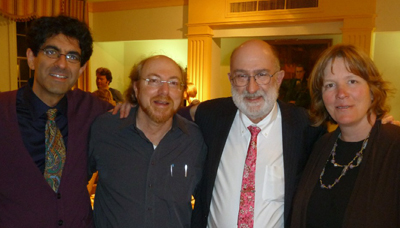
 By invitation of the German Studies Section of Modern Languages and Literatures, Professor Sander Gilman, Distinguished Professor of the Liberal Arts and Sciences and Professor of Psychiatry at Emory University, was a guest at the College of William & Mary Wednesday, November 17th.
By invitation of the German Studies Section of Modern Languages and Literatures, Professor Sander Gilman, Distinguished Professor of the Liberal Arts and Sciences and Professor of Psychiatry at Emory University, was a guest at the College of William & Mary Wednesday, November 17th.
Professor Gilman gave a more informal talk with the title “Whose Body Is It Anyway? Sexual Transformation in Germany (1890-1933)” and a more formal lecture: “From the Nose Job to the Face Transplant: A History of the Authentic Face.” Both events took place in Washington Hall, and were attended by students and faculty from numerous disciplines and programs.
Sander Gilman is the author of over forty books and 200 articles, including: Contemporary Medicine: Biological Facts and Fiction; Jewish Self-Hatred; Fat: A Cultural History of Obesity; Difference and Pathology: Stereotypes of Sexuality, Race, and Madness; Disease and Representation: Images of Illness from Madness to AIDS; Freud, Race, and Gender; Inscribing the Other; The Jew‘s Body; Franz Kafka: The Jewish Patient and, more recently, Creating Beauty to Cure the Soul: Race and Psychology in the Shaping of Aesthetic Surgery, Jewish Frontiers: Essays on Bodies, Histories, and Identities and The Fortunes of the Humanities: Teaching the Humanities in the New Millennium.
Sander Gilman’s visit was made possible by generous contributions from Arts and Sciences, The Charles Center, The Programs in Literary and Cultural Studies and Jewish Studies, the Departments of Modern Languages and Literatures, Religious Studies, English, History, and Psychology.
Our first annual French & Francophone Studies research conference took place on Saturday, Nov. 13, between 9am and 1pm, and it featured six twenty-minute formal presentations by students in our program. These talks featured: three ongoing honors theses projects; research done as part of a student internship in Paris; an original video produced in one of our classes; research conducted in a museum in Montpellier. More specifically:
* Philippe Halbert (’11) spoke of his research in the French national archives, and explained his thesis about the changing functions and popularity of monsters in the early modern imaginary
* Michael Smith (’11) presented his honors thesis on literary representations of Haussmanization and the anxieties it provoked
* Eve Grice (’11) described her honors thesis research on the tensions between colonialism and post-colonialism in the recently opened CNHI (Museum of Immigration) in Paris
* Bridget Carr (’12) critiqued development aid strategies in France’s former colonies
* Ashley Hoover (’11) and Sami Tabbara (’13) spoke of the intertextual references they built into their original video production
* Danny Yates (’13) discussed Said’s understanding of Orientalism in reference to paintings and writings by Delacroix
Six other students majoring in French & Francophone Studies introduced the speakers and prepared questions for our two general discussion periods.
This year’s program was sponsored by the Charles Center and by the Reves Center for International Studies.
Ashley Hoover, Ingrid Heiberg, and Michael (Macs) Smith have just been invited for induction.

By Erin Zagursky
Over the past decade, William & Mary’s students and alumni have been very successful in obtaining Fulbright Scholarships to teach and study in countries around the world. This year alone, a record 13 students and alumni were selected.
But the students who have obtained the highly competitive scholarships did not get there on their own. Much of their success is owed to the support and opportunities offered to them by the College’s faculty and staff members, who work tirelessly with students to prepare them for the scholarships.
One of those faculty members is Bruce Campbell, an associate professor of German and associate chair of faculty affairs in the modern languages & literatures department.
“While many William & Mary faculty members take an active interest in promoting the Fulbright program to their students and mentoring them through the process, Bruce has really made it a mission to increase the number of Fulbrighters we send to Germany and Austria,” said Lisa Grimes, William & Mary Fulbright program advisor. “The proof of his success is in the numbers: four of our students are currently finishing up a year in Austria or Germany, and in the fall we’re sending four students to teach English, one to conduct research, and one student is an alternate for a position in Germany. No other country has nearly that many Fulbright recipients or applications.”
Campbell said that he—along with colleagues—have made a conscious effort over the past decade to assist students in applying for Fulbrights or other academic honors. That help begins with letting the students know what opportunities are available to them as soon as possible in their college career.
He was also quick to note that the College’s Fulbright success begins with its students.
“We don’t coach the students, we don’t write things for them—the students are doing it on their own. We’re just there every step of the way,” Campbell said.
And when those students succeed—as they have done for a decade now—the professors celebrate, too. Campbell, who was an English teaching assistant in Germany himself, knows what it can do for a student’s life and career.

 (2009: Dir. Vladimir Bortko) Cossacks, forbidden pleasures, blood and gore. One critic called Vladimir Bortko’s adaptation of Taras Bulba—Gogolivud, a Hollywood action spectacle that has nothing to do with Nikolai Gogol’s 19th century novella, on which it is allegedly based, and everything to do with the conventions of the commercial film epic. Come watch the film that caused a scandal in several European nations upon its release in 2009.
(2009: Dir. Vladimir Bortko) Cossacks, forbidden pleasures, blood and gore. One critic called Vladimir Bortko’s adaptation of Taras Bulba—Gogolivud, a Hollywood action spectacle that has nothing to do with Nikolai Gogol’s 19th century novella, on which it is allegedly based, and everything to do with the conventions of the commercial film epic. Come watch the film that caused a scandal in several European nations upon its release in 2009.
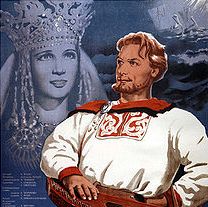
 Mark your calendars. Russian Studies students present three Russian fantasy films: an epic, a Soviet scifi film, and a post-Soviet action thriller. Screenings: Oct 7, Sadko (1953), Oct 14, The Amphibian Man (1962), and Oct 21 Night Watch (2004). All screenings will be in Tyler 201 at 5 pm.
Mark your calendars. Russian Studies students present three Russian fantasy films: an epic, a Soviet scifi film, and a post-Soviet action thriller. Screenings: Oct 7, Sadko (1953), Oct 14, The Amphibian Man (1962), and Oct 21 Night Watch (2004). All screenings will be in Tyler 201 at 5 pm.

 Anastasia Kayiatos (University of CA, Berkeley) introduces Oakie Treadwell’s Experimental Film Maggots and Men. Maggots and Men is a groundbreaking experimental film project from the Bay Area. Sex, gender, and revolution converge in a story about the 1921 uprising of the Russian sailors against Bolshevik oppressors. The film is inspired by Sergei Eisenstein’s 1925 classic Battleship Potemkin and carries the title of its first reel. Maggots and Men is a postmodernist text, which recycles the aesthetic strategies of the montage movement, manifests the homoerotic subtexts that many critics found significant in Eisentsein’s famous picture, and challenges modern preconceptions about gender and sexuality.
Anastasia Kayiatos (University of CA, Berkeley) introduces Oakie Treadwell’s Experimental Film Maggots and Men. Maggots and Men is a groundbreaking experimental film project from the Bay Area. Sex, gender, and revolution converge in a story about the 1921 uprising of the Russian sailors against Bolshevik oppressors. The film is inspired by Sergei Eisenstein’s 1925 classic Battleship Potemkin and carries the title of its first reel. Maggots and Men is a postmodernist text, which recycles the aesthetic strategies of the montage movement, manifests the homoerotic subtexts that many critics found significant in Eisentsein’s famous picture, and challenges modern preconceptions about gender and sexuality.

 Join guest speaker Anastasia Kayiatos (University of California, Berkeley) and Roy Chan (William & Mary) in a wide-ranging conversation about sexuality within the context of socialist and post-socialist spaces. Ms. Kayiatos and Prof. Chan work on the cultural histories of Russia and China respectively, and have collaborated on projects concerning the issue of sexual difference in the second world. They welcome all scholars, students and curious individuals to join in conversation on how to think about not only sexuality, but broader issues of social difference in connection to the practices, institutions and historic legacies of socialism.
Join guest speaker Anastasia Kayiatos (University of California, Berkeley) and Roy Chan (William & Mary) in a wide-ranging conversation about sexuality within the context of socialist and post-socialist spaces. Ms. Kayiatos and Prof. Chan work on the cultural histories of Russia and China respectively, and have collaborated on projects concerning the issue of sexual difference in the second world. They welcome all scholars, students and curious individuals to join in conversation on how to think about not only sexuality, but broader issues of social difference in connection to the practices, institutions and historic legacies of socialism.
 To honor Professor Ronald St.Onge’s forty years of dedication to the College of William & Mary, on the occasion of his retirement the Department of Modern Languages has established a fund for a prize to be awarded every year to the senior in French & Francophone Studies with the most promising plans for graduate work. The recipient of this prize will be announced every year at the departmental graduation ceremony.
To honor Professor Ronald St.Onge’s forty years of dedication to the College of William & Mary, on the occasion of his retirement the Department of Modern Languages has established a fund for a prize to be awarded every year to the senior in French & Francophone Studies with the most promising plans for graduate work. The recipient of this prize will be announced every year at the departmental graduation ceremony.
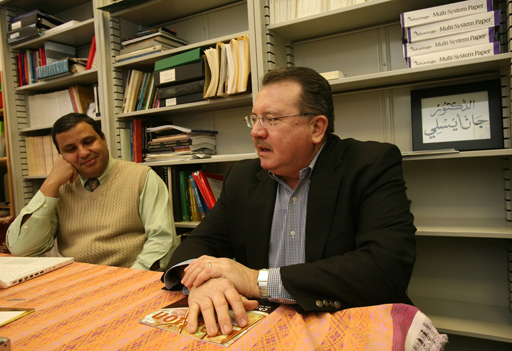
 By Jim Ducibella | May 10, 2010
By Jim Ducibella | May 10, 2010
In a Washington Hall office the size of an average walk-in closet, the future of the Arabic language is being designed. Not the language itself, but the manner in which the language will be taught for years to come.
Close friends John Eisele and Driss Cherkaoui, both associate professors of modern languages and literatures at William & Mary, plan to devote much of their foreseeable future to producing seven textbooks. Three of them will focus on Modern Standard Arabic, the written form that is used across the Arab world. They also will write one volume each on the four major dialects of the language: Moroccan, Egyptian, Syrian and Iraqi. All will be supplemented with videos, CDs and other multi-media accompaniments.
The United States Department of Education is so enthusiastic about this monumental project that it has awarded Eisele and Cherkaoui a three-year International Research and Studies grant totaling $728,000. The grant will support the development, testing, revision and production of a little more than half of the project. That would include two levels of Modern Standard Arabic, and the Moroccan and Iraqi dialect modules.
During the spring semester, the professors were writing part one of the Modern Standard Arabic textbook, as well as working on the textbook on the Moroccan dialect.
Pearson Education is publishing the series. Although Pearson publishes in many different languages, the professors say this will be Pearson’s inaugural effort at publishing a textbook in Arabic.
A portion of their work has already been pilot-tested at the University of Arizona, under former student/now Arabic instructor Scott Brown. Brown reported that his students “really liked it, really thought it was excellent.” The professors are sounding out contacts at other universities about using their textbooks, particularly for summer programs. Cherkaoui, who founded the Arab-American Language Institute in Morocco in 2008, said he will start pilot-testing their work there this summer.
“This is really different from anything Arabic has ever had,” Eisele said. “And it is really unusual for a major publisher to publish in a foreign language for which the audience is so small. So this is a big step for them.”
The audience seeking to learn Arabic may be small by comparison, but seems to be growing like a teenage boy.
Eisele joined the College in 1994; Cherkaoui arrived two years later. In those days, they may have taught Arabic to between 60 and 80 students. Following the terrorist attacks of September 11, 2001, that number grew steadily. Now the two professors work with between 250 and 300 students. Relative to the size of the College, the William & Mary program is one of the most robust in the country.
“The market changed tremendously after 9/11,” Cherkaoui explained. “The number of students grew to four and five times more than before. The same thing happened with hiring. Before 9/11, all across America there were maybe two or three university teaching positions open per year. Now, there are universities that have so many openings they can’t fill them all, since hundreds of universities have started Arabic programs. The need is there for a more complete manner of teaching the language.”
The U.S. government agrees, and feels a more inclusive style of teaching Arabic can only help in the war against terrorism.
“The government actually has been trying to force the field to teach more dialects,” Eisele said. “It’s had a salutatory effect on our project. It’s a shame it has to come through this channel, but it forces the field to deal with linguistic reality. The American government and military felt a tremendous demand for fluency in Arabic.”
For the past 15 years or so, there has been one dominant Arabic textbook used in the United States:
Al-Kitaab. That’s it. Produced by Georgetown University in Washington, D.C., Al-Kitaab is three volumes long, supplemented by a host of videos.
“It’s well done, but it doesn’t really teach Arabic in a communicative fashion,” Eisele explained. “It doesn’t really get into the different dialects. It does have some excellent supplementary materials, but it can be improved upon.”
They also found that Al-Kitaab didn’t sustain or challenge third- and fourth-year students to their satisfaction. The two men were spending hours revising outside materials, getting videos for their class, making up question sets to accompany reading assignments.
“Finally, you have a pile of materials and you ask yourself, ‘What am I going to do with all of this?’,” Cherkaoui said. “And all you can think of is ‘Do something with it.'”
Several years ago, the men began meeting once a weekly at a coffeehouse. They not only discussed the ancillary material they were creating, but they also explored the intellectual aspects of the Arab world, especially poetry and literature, themes that they could wrap into the textbook.
“We could not start this from scratch if we had not known each other for so long,” Cherkaoui said. “We have been talking about something like this for a long time.”
Eisele produced a book proposal that Pearson heartily endorsed. The prospectus for publication became the foundation for the grant application, which carries with it the possibility for renewal.
Convincing college educators that there is value in something other than the traditional approach taken by Al-Kitaab will be an obstacle for the professors. But it may be one of the less imposing. There will be many hurdles to be scaled before all is said and done.
Arabs view their language differently from the way other cultures view their languages. To them, classic Arabic is a “sacred” language, since it is the language of the Koran, and it is valued above all other forms of the language. The modern version of this classical language, Modern Standard Arabic, is the language that is taught in schools throughout the Arabic world. It is used in most newscasts, as well as being the primary form of the written language used in literature and journalism.
Many involved in teaching Arabic, both native and non-native speakers, believe that Modern Standard Arabic should be the primary focus of Arabic language teaching in the first two to three years, leaving the learning of the everyday colloquial speech to a later point in time-if at all.
“This attitude is something we have to deal with,” Eisele said. “Hopefully, we can change some of those attitudes, but things have already begun to change. A generational shift is going on right now in the States with regard to teaching the dialects, but in the Arabic world the traditional view still holds sway. This is despite the fact that Arabs themselves rarely use the formal standard language for communicative tasks outside of a small circumscribed group. This is especially true in Egypt and Lebanon, where the dialect has been gradually taking over some of the tasks (such as news reading) usually assigned to the standard language. But even in these countries, many traditional language educators view the teaching of dialects as beneath them.”
Eisele continued: “We believe there’s room for us to establish a base of support, and to say ‘You know, we’re not against the literary language. We want to teach it and teach it well. But we also want to teach some of the common, everyday language, and that means we have to take in some of these dialects as well.’ ”
Eisele and Cherkaoui argue that any language that dates back almost 2,000 years carries a lot of culture with it. Previous texts have not done a good job of incorporating information on that cultural background, which they consider a serious drawback, and one which they are taking great pains to avoid.
“American students need to understand what this culture is all about,” Cherkaoui said. “Is language separate from culture? I don’t think so. Without understanding the culture, you may know some language, but that’s all you know. Someone who comes to America and knows English, but not our culture, feels really strange. That adds some weight to our shoulders. We really have to think clearly how to implement Arab culture into the textbooks.”
The plan is to film videos in several Arab countries, authentic scenes featuring authentic people employing everyday dialect. That work has been contracted out by Pearson, but there is a commitment to shoot in such a way as to “put” students into real situations.
“We hope,” Cherkaoui says, “to give an adequate accounting of both the colloquial dialects as spoken languages and of Modern Standard Arabic as a written language, and how they function together in Arab society and culture. We are not partisans of one side or the other (colloquial versus Modern Standard), but believe that students should be exposed to the variation in the Arabic language situation as early as possible. This will serve to deepen their understanding of Arab societies, cultures and identities.”

 Sarah Argodale has successfully defended her Honors Thesis “Identity and Memory in the Tatarstan Republic” and was awarded the highest honors. She has presented her research findings at the Honors Colloquium and William & Mary European Studies Conference.
Sarah Argodale has successfully defended her Honors Thesis “Identity and Memory in the Tatarstan Republic” and was awarded the highest honors. She has presented her research findings at the Honors Colloquium and William & Mary European Studies Conference.
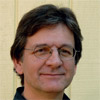
 Professor Corney has been awarded a Harrison Chair of History Professorship (2009-2013).
Professor Corney has been awarded a Harrison Chair of History Professorship (2009-2013).

 Eleonora Figliuoli won a bronze medal in this year’s contest, there were 1,023 essays submitted from 64 universities and colleges across the nation. Each essay was ranked by three judges in Russia, and often the results were simply too close to call.
Eleonora Figliuoli won a bronze medal in this year’s contest, there were 1,023 essays submitted from 64 universities and colleges across the nation. Each essay was ranked by three judges in Russia, and often the results were simply too close to call.
Eleventh Annual National Post-Secondary Russian Essay Contest
American Council of Teachers of Russian
The topic was: Please write a short story or essay based on this famous
Russian
proverb: Не имей сто рублей, а имей сто друзей
(It’s better to have a hundred friends than a hundred rubles).

Year after year, several W&M students decide to spend a semester abroad with our program in La Plata, Argentina. The program’s articulation around the interdisciplinary study of human rights is, perhaps, one of the reasons why it attracts students in Hispanic Studies, Latin American Studies, and several other fields. During their semester abroad, W&M Students have the rare opportunity to intern with the Comisión Provincial por la Memoria in opportunities related to its work on the legacies of dictatorship and recent political history of “the disappeared.” Moreover, W&M students participate in extra-curricular activities related to the Comisión‘s work.
Recently, the Tandil-based newspaper El Eco Digital highlighted the experience of our students as they explored areas used as clandestine detention centers during the last military regime, and sites of memory. The article includes commentaries from W&M’s Emily Stevens, Alex Guzmán, and Katlyn Toylle.
The full article, in Spanish, can be found here.
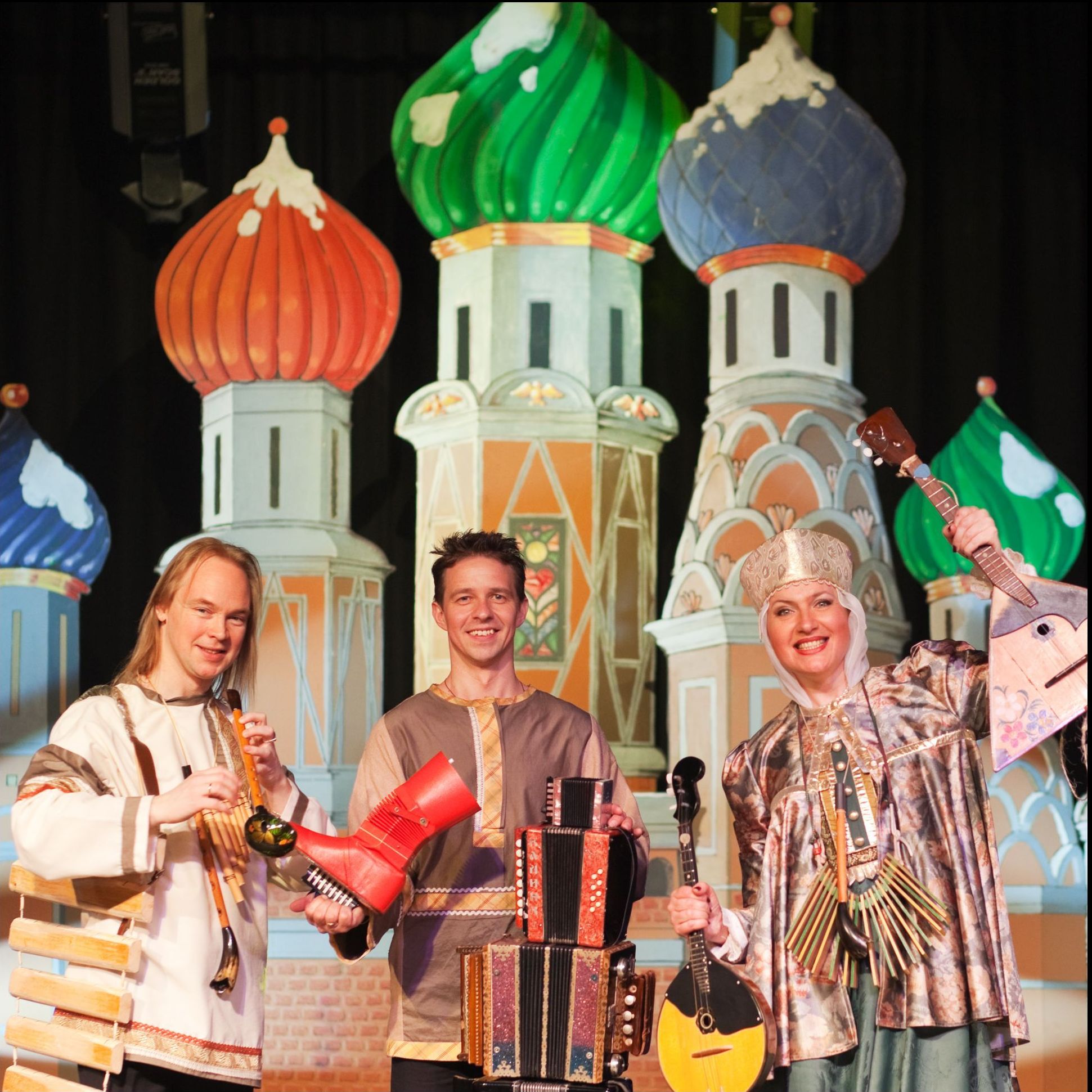
 The famous folk group returns to Williamsburg and will perform in Ewell Recital Hall on April 12 at 7 pm. The winners of a number of prestigious music competitions throughout Europe, members of the Zolotoi Plios Folk Ensemble – Sergei Gratchev, Elena Sadina, and Aleksandr Solovov – are all graduates of the Saratov Music Conservatory. They currently teach at the Royal Carillon School in Mechelen, Belgium, and at Middlebury College, Vermont.
The famous folk group returns to Williamsburg and will perform in Ewell Recital Hall on April 12 at 7 pm. The winners of a number of prestigious music competitions throughout Europe, members of the Zolotoi Plios Folk Ensemble – Sergei Gratchev, Elena Sadina, and Aleksandr Solovov – are all graduates of the Saratov Music Conservatory. They currently teach at the Royal Carillon School in Mechelen, Belgium, and at Middlebury College, Vermont.
Co-Sponsored by Russian and Post-Soviet Studies, Literary and Cultural Studies, Asian Studies Intiatives Programs, the Music Department, Dean’s Office Lecture Fund, and the Charles Center.
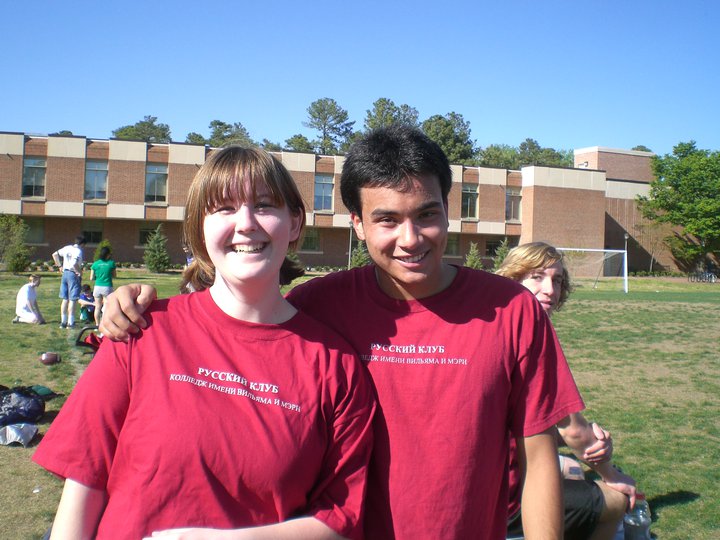
 This weekend on Barksdale Field, the Russian House played soccer with the German House. The Russian House team beat the German team 5:1. The Russian House team is getting ready for the World Cup in South Africa 🙂
This weekend on Barksdale Field, the Russian House played soccer with the German House. The Russian House team beat the German team 5:1. The Russian House team is getting ready for the World Cup in South Africa 🙂
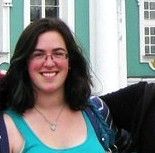
 Maggie Burke, a second year student at the College, was recently awarded the 2010 Dobro Slovo Scholarship in the amount of $500. Established in 2005, the Scholarship is funded by the donations of Russian alumni and faculty and is intended for students studying on the W & M Summer Study Abroad program at St. Petersburg State University.
Maggie Burke, a second year student at the College, was recently awarded the 2010 Dobro Slovo Scholarship in the amount of $500. Established in 2005, the Scholarship is funded by the donations of Russian alumni and faculty and is intended for students studying on the W & M Summer Study Abroad program at St. Petersburg State University.

 Jacob received Chappell Fellowship. Barry received Charles Center International Research Scholarship. They will do research in Russia this summer.
Jacob received Chappell Fellowship. Barry received Charles Center International Research Scholarship. They will do research in Russia this summer.
[Story by Soyoung Hwang ’11 and David Williard;
March 17, 2010; http://www.wm.edu/as/news/2010/hibbs_10.php]
Kate Hibbs ’10 knew the many lessons of service before going to the Eastern Shore to serve as a migrant-health outreach worker last summer. Her experience as a stand-out Sharpe community scholar at the College prepared her academically; her experience serving migrant needs in Chicago gave her on-the-ground experience. Still, she felt she stumbled.
“If you’re not aware of your privilege, your service is patronizing,” she said.
Hibbs worked with pregnant women within the migrant community through an internship with Rural Family Development, one of two Eastern Shore agencies that maintains a memorandum of understanding with the Hispanic Studies department at William & Mary. Her primary tasks were to counsel women about pre-natal health practices and to help ensure their access to the medical resources available to them
Hibbs found that the need to acknowledge her own privilege relative to those she was serving became a theme underlying her work. Unknown to her at first, most of the women with whom she would work were from rural, southern Mexico and identified as part of an indigenous culture rather than as “Mexican.” Tensions arose due to the language barrier.
“We’re speaking Spanish with each other as our second language, so naturally there’s communication breakdown. … It’s hard to establish that legitimacy and trust,” Hibbs said.
Hibbs is the first to admit she was “not an expert in pregnancy,” and so being in a situation where she had come in as an “expert” to educate this woman forced her to evaluate her position in relation to that of the pregnant woman.
“I didn’t realize that my command of Spanish was better than hers, and, for her, that’s intimidating because, as an American, I represent the oppressor. … I’m in this privileged position,” Hibbs explained.
Despite what she calls her “folly and rudeness” in going into the woman’s home unprepared for this challenge, Hibbs found an effective way to bridge the gap by asking the pregnant woman to teach her some “Misteko,” the indigenous dialect.
“My interest in her culture, in her background, was huge because not even people from her country take an interest in her culture, and so to have someone do that is not only novel, but for her incredibly empowering,” Hibbs said. “That I teach her and she can teach me is empowering for her and humbling for myself. It’s not just understanding their perspective; it’s truly identifying with their needs.”
Hibbs’ ability to pro-actively navigate those tensions resonates with her faculty advisor, Jonathan Arries, associate professor of Hispanic Studies at William & Mary. “She is an amazing student and an incredible person,” Arries said. “The character of Kate that I keep coming back to is her generosity of spirit. It is the kind of thing we seek to cultivate in the humanities. She is the kind of person on whom you can rely to do what needs to be done, and more. She is a critical thinker who has amazing organizational skills.”
Back on campus, Hibbs continues to nurture the genuine bonds of identity forged with many of the women with whom she worked. She identifies with their struggles to secure health advice and care, as well as with their general struggles to nurture families in situations that seem, at times, unfriendly toward them.
“They call me all the time! I love it,” Hibbs said. “Pregnancy is such an important part of a woman’s life. The fact that I shared it with them, they want to share it with me.”
Two French and Francophone Studies majors are currently studying in Paris, France (at the I.F.E). Besides her classes on European and French politics and culture
Kathryn Ticknor, who majored in French Studies and Linguistics in 2007,, has been accepted in the Master’s and Phd Program in Linguistics at Georgetown University

 On Feb 25th 2010, Sarah Argodale presented her research on memory sites in Post-Communist Tatarstan at the 11th Annual Honor Colloquium. Sarah’s advisor is Professor Corney.
On Feb 25th 2010, Sarah Argodale presented her research on memory sites in Post-Communist Tatarstan at the 11th Annual Honor Colloquium. Sarah’s advisor is Professor Corney.
 Professor Maryse Fauvel (MLL Francophone studies) has won a 2010 Plumeri Award for Faculty Excellence.
Professor Maryse Fauvel (MLL Francophone studies) has won a 2010 Plumeri Award for Faculty Excellence.
Created by alumnus and former Board of Visitor member Joseph J. Plumeri (’66), the Plumeri Awards are given annually and recognize faculty who demonstrate exceptional performance in research, teaching and service over a number of years.
Last year, Katherine Kulick, Associate Professor of French and Modern Languages, received the Thomas Jefferson Award.


 Originally posted in:
Originally posted in:
http://www.wm.edu/news/stories/2010/nicadwinner-023.php
“In Color,” the latest single by the international music band NiCad, looks a lot better, thanks to the music video created by Zach Keifer ’07 as part of a challenge issued by band members to William & Mary filmmakers.
Keifer’s was one of four entries submitted by William & Mary students and alumni for consideration during the College’s annual Global Film and Music Festival in February. After determining that the song was about an individual’s struggle to find himself, he blended ideas from an older project focusing on color to create the winning entry. “Basically I decided to make it about someone living inside a pepper; a red bell pepper,” he said.
Concerning the contest, Troy Davis, director of the Swem Media Center, said, “It was discussed when NiCad visited the campus last year. Also at that time, plans were being made for the Global Film and Music Festival, and we all thought this contest would be a great way to bring student work into the festival. The contest, apart from being cool and interesting, really demonstrates a collision of talented people and supporters and the emerging availability of new-media learning experiences inside and outside classrooms at William & Mary.”
On hand to present the award to Keifer was Gilad Woltsovitch, a member of the band, who discussed each entry on behalf of NiCad.
Keifer sees the honor of creating the “official” video as worth much more than money. “I was really surprised that they, being an international band, would come through William & Mary,” he said. “They are very successful. Not often that you have rock stars willing to give up that kind of ownership. They certainly were taking a huge chance. And the song is great. I listened to it 1,000 times, and it never got old.“
Keifer is a well-known presence at his alma mater. He was one of the first students to work at the Swem Media Center when it opened. He won the initial 24 Speed video contest in 2006, and he has returned each subsequent year to serve as judge for that event.
“William & Mary always has had a unique culture of video makers,” Keifer said. “My philosophy is to take advantage of every opportunity; I am particularly impressed by the work being turned out through the Swem Media Center. Right now, the media center seems to be providing the best opportunities on campus.”
NiCad is an international experimental rock band based in the Netherlands. It was formed in 2004 when five students from five different countries met at The Hague’s Royal Conservatory in Holland. In September, band members conducted seminars on electroacoustical music in the Swem Media Center at the College. As part of their visit, they provided William & Mary students with their new single, “In Color,” and proposed that the students compete to create the official music video.
[Story by Erin Zagursky]
Research conducted by William & Mary undergraduate students has led to the recent release of formerly classified documents that shed new light on the impact of the detainment of one of Argentina’s most famous political prisoners, Jacobo Timerman.
Last spring [2009], 12 William & Mary students worked with Hispanic Studies Professor Silvia Tandeciarz and Southern Cone Specialist Carlos Osorio on an internship with the National Security Archive in Washington, D.C. They spent the semester researching hundreds of documents relating to the detention of Argentine journalist Jacobo Timerman more than 30 years ago. The results of that research were published in a National Security Archive Briefing Book this month that confirm Timerman’s case caused the near-fracture of the Argentine military regime.
With support from a QEP-Mellon Undergraduate Research Grant, the students researched hundreds of documents in order to select those that best captured Timerman’s story. The students then compiled short summaries of each of the documents and created an introduction for the briefing book. View the video of this project here.
“I have done a great deal of research during my time in college, but nothing compared to the research we undertook with this project — there is something so much more intriguing, so much more real about reading actual government documents,” said Erin Maskell ’10. “Nothing had been processed, no one else had read it first and decided what was important and then presented this to you in a watered down version. You got to read the story; you got to decide what was important.”
In the course of their research, the students reached out to fellow students on William and Mary’s study abroad program in Argentina to compare the American version of accounts with that found at the Comisión Provincial por la Memoria. The coordinator of the Argentine Archive, Laura Lenci, invited two William and Mary students to create a companion briefing book with the Argentine documents. The students also used their research to compile a timeline, detailing important events in the Timerman story and providing information on the documentation for those events.
“It is our hope that the chronology and the briefing books will be of interest to human rights scholars of all disciplines, as well as to the general public,” said Tandeciarz, Class of 2011 Associate Professor of Hispanic Studies. “It is with great pride that we present to the public the results of this collaboration, which brings together three institutions for the first time: the College of William and Mary, the National Security Archive, and the Archivo de la DIPBA, Comisión Provincial por la Memoria. And it is particularly gratifying to know that the College has played a small part in making this collaboration possible.”
David Culver ‘09 said that the opportunity provided him and the others a rare experience.

“As undergraduate students we’re often limited to studying the work and research done by professionals in the field, whether it be through textbooks or other published materials,” he said. “Rarely are the students themselves put at par with those professionals and given the resources to do their own firsthand research and, as a result, create their own narrative of history. This course allowed us to do just that.”
Culver hopes that the work that the students did during the internship and the resulting briefing book will allow others to “learn yet another aspect to the very complex story that is Jacobo Timerman.” He said he’d also like to see more opportunities like this one made available to students.
“This was a course where the professors — the experts in the field — turned to the students as peers and relied on their intelligence, their drive and their dedication,” he said. “Professor and student were discovering and learning together. It takes maturity on part of the student and humility on the professor’s part. The result of this unique and rewarding approach speaks for itself.”
Maskell said that the project taught her a lot about “what it means to do research.”
“When we first began this entire project we went into it rather blindly- we weren’t sure exactly what we were looking for or what our goals were,” said Maskell, an economics major and Hispanic studies minor. “There were thousands of documents, and it felt overwhelming at times. However, the more we learned the more we were able to refine our research goals, and the project changed enormously over the course of the semester. I am much more comfortable with the entire research process now, and have acquired skills in reading and interpreting primary source documents that are transferrable to so many other fields of study.”
The experience impacted Maskell so greatly that she decided to continue interning at the archive through the summer, finishing the briefing book and compiling documents to be used in an Argentine court case.
“I am still working on this project now, and I love every moment of it because I feel that I am doing something that truly matters,” she said. “I love to learn just for the sake of learning, but to be able to take all the history I have read about or learned in a classroom and apply it to a current day situation in a way that actually has an impact makes me feel like all my hard work in school is worth it.”
 John Eisele and Driss Cherkaoui have been awarded an International Reseach and Studies (IRS) instructional materials grant from the Dept. of Education. The grant, totaling $728,000 over three years, will be used to develop a textbook series for Arabic language, both the literary language as well as four main dialects of Arabic. The project, entitled “Teaching Arabic Variation: Developing language resources for integrating Modern Standard Arabic and Arabic dialects,” addresses the need for greater numbers of individuals who are knowledgeable about and fluent in the Arabic language. Since an important aspect of proficiency in Arabic is the attainment of productive fluency (in speaking) in at least one of its dialects, and some passive fluency in one or more other dialects (in listening), the curriculum and language learning resources to be developed under this grant will include workbooks on four main Arabic dialects (Moroccan, Egyptian, Syrian, and Iraqi) in addition to a series of three textbooks which focus on Modern Standard Arabic.
John Eisele and Driss Cherkaoui have been awarded an International Reseach and Studies (IRS) instructional materials grant from the Dept. of Education. The grant, totaling $728,000 over three years, will be used to develop a textbook series for Arabic language, both the literary language as well as four main dialects of Arabic. The project, entitled “Teaching Arabic Variation: Developing language resources for integrating Modern Standard Arabic and Arabic dialects,” addresses the need for greater numbers of individuals who are knowledgeable about and fluent in the Arabic language. Since an important aspect of proficiency in Arabic is the attainment of productive fluency (in speaking) in at least one of its dialects, and some passive fluency in one or more other dialects (in listening), the curriculum and language learning resources to be developed under this grant will include workbooks on four main Arabic dialects (Moroccan, Egyptian, Syrian, and Iraqi) in addition to a series of three textbooks which focus on Modern Standard Arabic.
 In the first volume of the latter series, each unit has as its cultural focus a different urban cultural center in the Arab world, and as part of that feature distinctive phrases in the local dialect are provided to give students their first taste of Arabic linguistic reality in all its variety. In the dialect modules information is likewise provided on important local dialects within the national spheres treated: for example, the Egyptian Arabic module would include information on distinctive features of Sa`iidi, Alexandrian, and Bedouin dialects, among others, which are an important part of the linguistic competence of native speakers of this dialect. The currect grant will support the development, testing, revision, and production of a little more than half of the project: two levels of MSA, and two modules of the dialects (Moroccan and Iraqi). The project in its entirety will eventually provide materials for at least three to five years of study of Modern Standard Arabic and at least one of the Arabic dialects covered by the materials, depending on the number of class hours per week and the amount of time devoted to the study of a dialect. They will be learner centered, technology-rich, and tasked based, with each unit developing the four skills in a coordinated and focused manner. The materials will be pilot-tested at The College of William and Mary as well as at several institutions in the United States and abroad, and will be published in both printed form as well as in an online format.
In the first volume of the latter series, each unit has as its cultural focus a different urban cultural center in the Arab world, and as part of that feature distinctive phrases in the local dialect are provided to give students their first taste of Arabic linguistic reality in all its variety. In the dialect modules information is likewise provided on important local dialects within the national spheres treated: for example, the Egyptian Arabic module would include information on distinctive features of Sa`iidi, Alexandrian, and Bedouin dialects, among others, which are an important part of the linguistic competence of native speakers of this dialect. The currect grant will support the development, testing, revision, and production of a little more than half of the project: two levels of MSA, and two modules of the dialects (Moroccan and Iraqi). The project in its entirety will eventually provide materials for at least three to five years of study of Modern Standard Arabic and at least one of the Arabic dialects covered by the materials, depending on the number of class hours per week and the amount of time devoted to the study of a dialect. They will be learner centered, technology-rich, and tasked based, with each unit developing the four skills in a coordinated and focused manner. The materials will be pilot-tested at The College of William and Mary as well as at several institutions in the United States and abroad, and will be published in both printed form as well as in an online format.
[By Steve Otto]

Over spring break 2009, Professors Bickham Mendez (Sociology and Latin American Studies) and Tandeciarz (Hispanic Studies) led a research team of eight students to the Tucson/Nogales region of the U.S.–Mexico border. The pilot project combined interdisciplinary field research, course work, and civic engagement to focus on “border issues”: the political, social, and cultural effects of immigration from Mexico/Central America to the United States.
Participating students co-enrolled in either Hispanic Studies 361 or Sociology 440 and received 1 credit for their work. Borderlinks, a bi-national organization “bringing people together to build bridges of solidarity across North and Latin American borders and to promote intercultural understanding and respect,” acted as institutional host and provided delegation leader Lilli Mann ’07. The project was funded through the Charles Center’s QEP/Mellon grant.

The Tucson/Nogales region has become one of the most heavily trafficked and perilous crossing points between Mexico and the United States. The W&M group met with humanitarian organizations, customs/border and courtroom officials, and immigration attorneys to gain an understanding of the complexities of immigration issues as they play out on the border and beyond.
On the Mexican side of the border, students and faculty shared meals with migrants who had recently been deported from the United States, and they interviewed migrants preparing to make the treacherous journey across the desert. They learned about the militarization of the border and its human cost, and were guided along one of the desert trails frequented by migrants on their way to the United States. Several of the students posted their field notes to blogs:

On returning to Williamsburg, the students presented their findings at a community event titled “Crossing Borders in Our Communities: Latino/a Migration and Border Issues.” Included in the audience of about 100 were representatives from area social services, the Network for the Latino People, and various other organizations that work with the local Latino/a community.
Isabelle Cohen ’11 and Amanda Potter ’10 created a photo essay [pdf] about the project. Sewon Chung ’09 and and Katherine Schaller ’11 produced a two-part video documentary and posted it to YouTube.
The professors explore their experiences with this project in another related video.
Related Links:
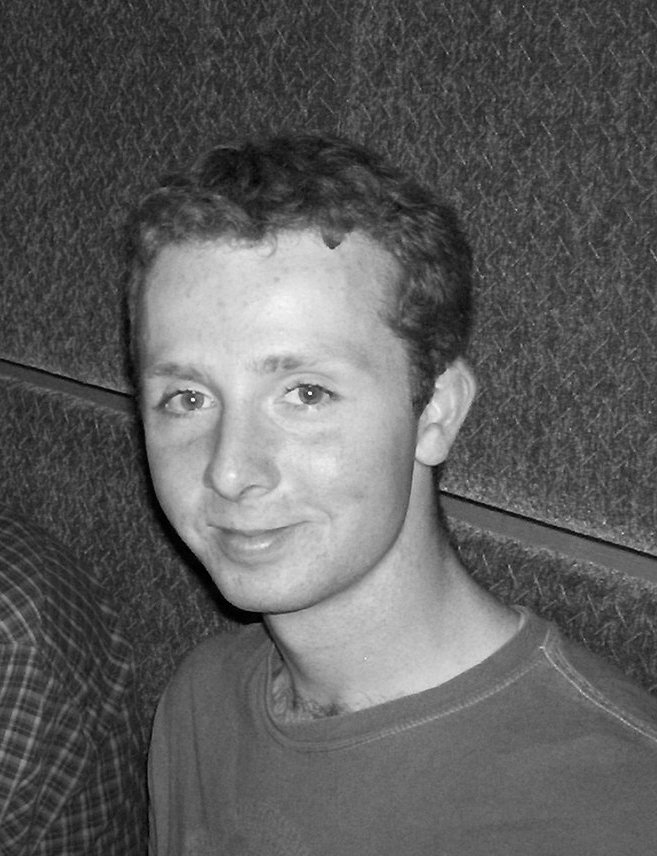
 William Sinnott, a second year student at the College, was recently awarded the 2009 Dobro Slovo Scholarship in the amount of $500. Established in 2005, the Scholarship is funded by the donations of Russian alumni and faculty and is intended for students studying on the W & M Summer Study Abroad program at St. Petersburg State University.
William Sinnott, a second year student at the College, was recently awarded the 2009 Dobro Slovo Scholarship in the amount of $500. Established in 2005, the Scholarship is funded by the donations of Russian alumni and faculty and is intended for students studying on the W & M Summer Study Abroad program at St. Petersburg State University.
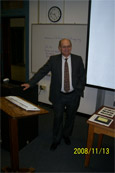
 Our guest speaker, Mr. John Carlson (Army Lieutenant Colonel, Ret.), has served as Chief and Senior Presidential Translator on the “Moscow Hotline” since 1989.
Our guest speaker, Mr. John Carlson (Army Lieutenant Colonel, Ret.), has served as Chief and Senior Presidential Translator on the “Moscow Hotline” since 1989.
 Yuri Tsivian is a leading scholar of Russian Cinema and international cinema of the 1920s-40s. His most recent monographs are Ivan the Terrible (2002) and Lines of Resistance: Dziga Vertov and the Twenties (2004). He is also involved in the restoration and video mastering of silent films; the remastered DVD versions of Dziga Vertov’s Man with the Movie Camera and Ivan the Terrible both feature his audio essays.
Yuri Tsivian is a leading scholar of Russian Cinema and international cinema of the 1920s-40s. His most recent monographs are Ivan the Terrible (2002) and Lines of Resistance: Dziga Vertov and the Twenties (2004). He is also involved in the restoration and video mastering of silent films; the remastered DVD versions of Dziga Vertov’s Man with the Movie Camera and Ivan the Terrible both feature his audio essays.
 Our warmest congratulations to Christine Bobal, Juliana Glassco, Katelyn Moscony, Michelle Thibault, and Kelsey Williamson, our graduating French majors (’08) who have been awarded teaching assistantship by the French Ministry of Education and the office of Cultural Services at the French Embassy. They will teach English and American culture to students in major French cities such as Lyon, Versailles, Rouen, and Rennes. Last year (2007) David Arndt, Maura DiRicco, Rachel Mathews, Mary Ogburn, Drew Schmidt, Kathryn Ticknor, and Amy Zerwick were chosen to teach in primary and secondary schools in Rouen, Lyon, Lille, Rouen and Nantes. These assistantships are quite an honor, especially for recent B.A. graduates, so we are extremely proud of all these nominees.
Our warmest congratulations to Christine Bobal, Juliana Glassco, Katelyn Moscony, Michelle Thibault, and Kelsey Williamson, our graduating French majors (’08) who have been awarded teaching assistantship by the French Ministry of Education and the office of Cultural Services at the French Embassy. They will teach English and American culture to students in major French cities such as Lyon, Versailles, Rouen, and Rennes. Last year (2007) David Arndt, Maura DiRicco, Rachel Mathews, Mary Ogburn, Drew Schmidt, Kathryn Ticknor, and Amy Zerwick were chosen to teach in primary and secondary schools in Rouen, Lyon, Lille, Rouen and Nantes. These assistantships are quite an honor, especially for recent B.A. graduates, so we are extremely proud of all these nominees.
 CONGRATULATIONS TO LAURA WAGSTAFF, the recipient of the McCormack-Reboussin scholarship for 2007-09! Laura will travel to France in the summer of 2008 to do research for her honors thesis on the eighteenth-century French pipe organ. In addition to working at the Bibliothèque de la Musique in Paris, Laura plans to visit key organs built by Francois-Henri Clicquot in order to observe the technical and aesthetic qualities of his instruments. While in Paris, she will also discuss her project with several French organ historians, organists, and organ professors.
CONGRATULATIONS TO LAURA WAGSTAFF, the recipient of the McCormack-Reboussin scholarship for 2007-09! Laura will travel to France in the summer of 2008 to do research for her honors thesis on the eighteenth-century French pipe organ. In addition to working at the Bibliothèque de la Musique in Paris, Laura plans to visit key organs built by Francois-Henri Clicquot in order to observe the technical and aesthetic qualities of his instruments. While in Paris, she will also discuss her project with several French organ historians, organists, and organ professors.
 Ariel Hunsberger, a double-major in French and European Studies, just received a Fulbright Assistanship to teach English to high school students in the Principality of Andorra. During her stay there, she also plans to conduct a reading and discussion group with parents and children on the topic of fairy tales, and to study the intersections of linguistic and national identities in Andorra. Ariel wants to pursue graduate study in languages and cultural studies upon her return to the U.S.
Ariel Hunsberger, a double-major in French and European Studies, just received a Fulbright Assistanship to teach English to high school students in the Principality of Andorra. During her stay there, she also plans to conduct a reading and discussion group with parents and children on the topic of fairy tales, and to study the intersections of linguistic and national identities in Andorra. Ariel wants to pursue graduate study in languages and cultural studies upon her return to the U.S.
 Our warmest congratulations to Christine Bobal, Juliana Glassco, Katelyn Moscony, Michelle Thibault, and Kelsey Williamson, our graduating French majors (’08) who have been awarded teaching assistantship by the French Ministry of Education and the office of Cultural Services at the French Embassy. They will teach English and American culture to students in major French cities such as Lyon, Versailles, Rouen, and Rennes. Last year (2007) David Arndt, Maura DiRicco, Rachel Mathews, Mary Ogburn, Drew Schmidt, Kathryn Ticknor, and Amy Zerwick were chosen to teach in primary and secondary schools in Rouen, Lyon, Lille, Rouen and Nantes. These assistantships are quite an honor, especially for recent B.A. graduates, so we are extremely proud of all these nominees.
Our warmest congratulations to Christine Bobal, Juliana Glassco, Katelyn Moscony, Michelle Thibault, and Kelsey Williamson, our graduating French majors (’08) who have been awarded teaching assistantship by the French Ministry of Education and the office of Cultural Services at the French Embassy. They will teach English and American culture to students in major French cities such as Lyon, Versailles, Rouen, and Rennes. Last year (2007) David Arndt, Maura DiRicco, Rachel Mathews, Mary Ogburn, Drew Schmidt, Kathryn Ticknor, and Amy Zerwick were chosen to teach in primary and secondary schools in Rouen, Lyon, Lille, Rouen and Nantes. These assistantships are quite an honor, especially for recent B.A. graduates, so we are extremely proud of all these nominees.
 Russian Studies students made this film in spring 2008. It is a mockumentary about a successful Soviet mission to the Moon in 1967. When the spacecraft’s radio failed, the crew was unable to communicate with ground control and accidentally landed in Kansas. Entirely in Russian with English subtitles 🙂
Russian Studies students made this film in spring 2008. It is a mockumentary about a successful Soviet mission to the Moon in 1967. When the spacecraft’s radio failed, the crew was unable to communicate with ground control and accidentally landed in Kansas. Entirely in Russian with English subtitles 🙂
 Kurt Carlson is a Russian and History major. He has been taking Russian at the college since fall 2006 and plans to use the award to travel to St. Petersburg this summer. At St. Petersburg State University, Kurt will be taking three courses: two in Russian and one in translation. He will be also doing an independent research project.
Kurt Carlson is a Russian and History major. He has been taking Russian at the college since fall 2006 and plans to use the award to travel to St. Petersburg this summer. At St. Petersburg State University, Kurt will be taking three courses: two in Russian and one in translation. He will be also doing an independent research project.
This year, ten members of the Russian program will be inducted into the Dobro Slovo National Slavic Honor Society. Sarah Argodale, Chris Burks, Aaron Chivington, Chris Hall, Nadia Mitina, Annie Mosher, Katie Mrkvicka, Erin O’Grady, Liz Owerbach, and Vadim Shneyder.
Sasha Prokhorov Receives the Jefferson Teaching Award
 Russian folk music group Zolotoi Plyos (Alexander Solovov, Elena Sadina, and Serguei Gratchev) gives a concert-demonstration of Russian folk music for W&M students and faculty. Wednesday, February 6, 2008, 8:30 p.m., Ewell Recital Hall Repertoire includes songs and instrumental tunes from across Russia played on more than 20 Russian folk instruments. Sponsored by: The Russian Studies, Literary and Cultural Studies, Reves Center for International Studies, Charles Center, and Department of Music
Russian folk music group Zolotoi Plyos (Alexander Solovov, Elena Sadina, and Serguei Gratchev) gives a concert-demonstration of Russian folk music for W&M students and faculty. Wednesday, February 6, 2008, 8:30 p.m., Ewell Recital Hall Repertoire includes songs and instrumental tunes from across Russia played on more than 20 Russian folk instruments. Sponsored by: The Russian Studies, Literary and Cultural Studies, Reves Center for International Studies, Charles Center, and Department of Music
watch?v=h2UdTl-l5GE
Helena Goscilo discusses the nature of opera, its Russian variant, and the transformation of Alexander Pushkin’s novel in verse (1823-31) into Pyotr Tchaikovsky’s world-renowned opera Eugene Onegin (1878). Helena Goscilo is UCIS Research Professor of Slavic at the University of Pittsburgh. She has authored and edited more than a dozen volumes, most recently Russian Culture in the 1990s, a special issue of Studies in 20th Century Literature (2000) and Encyclopedia of Russian Culture (2007).
the nature of opera, its Russian variant, and the transformation of Alexander Pushkin’s novel in verse (1823-31) into Pyotr Tchaikovsky’s world-renowned opera Eugene Onegin (1878). Helena Goscilo is UCIS Research Professor of Slavic at the University of Pittsburgh. She has authored and edited more than a dozen volumes, most recently Russian Culture in the 1990s, a special issue of Studies in 20th Century Literature (2000) and Encyclopedia of Russian Culture (2007).
 Dr. Kettering talks about items displayed at the exhibition in the Muscarelle Museum of Art. The exhibit includes many pieces from significant porcelain services made by the Imperial Porcelain Factory, starting from Empress Elizabeth and Catherine the Great to Nicholas and Alexandra. Visitors will see items featured at State Banquets at the Kremlin and other Imperial Palaces , as well as items designed for the Tsar’s private use aboard the Imperial Yachts. Among the rare items are two pieces from a service Catherine the Great ordered for her grandson, Grand Duke Constantine Pavlovich, as well as pieces from services presented by Augustus III of Saxony and Frederick the Great to the eighteenth century Russian Tsarinas. The exhibit also features 200 years of glassware, from a beaker from the time of Peter the Great to glassware for the Imperial Yachts and a vase made by the Imperial Glass Factory that the Dowager Empress Maria Fedorovna kept on her desk in Denmark after the Russian Revolution. Russian enamels from the late nineteenth century will include a major jewel casket made by the Ovchinnikov firm and presented to Tsar Alexander III’s Minister of the Interior, as well as the work of Fedor Ruckert and the workmasters of the Faberge firm.
Dr. Kettering talks about items displayed at the exhibition in the Muscarelle Museum of Art. The exhibit includes many pieces from significant porcelain services made by the Imperial Porcelain Factory, starting from Empress Elizabeth and Catherine the Great to Nicholas and Alexandra. Visitors will see items featured at State Banquets at the Kremlin and other Imperial Palaces , as well as items designed for the Tsar’s private use aboard the Imperial Yachts. Among the rare items are two pieces from a service Catherine the Great ordered for her grandson, Grand Duke Constantine Pavlovich, as well as pieces from services presented by Augustus III of Saxony and Frederick the Great to the eighteenth century Russian Tsarinas. The exhibit also features 200 years of glassware, from a beaker from the time of Peter the Great to glassware for the Imperial Yachts and a vase made by the Imperial Glass Factory that the Dowager Empress Maria Fedorovna kept on her desk in Denmark after the Russian Revolution. Russian enamels from the late nineteenth century will include a major jewel casket made by the Ovchinnikov firm and presented to Tsar Alexander III’s Minister of the Interior, as well as the work of Fedor Ruckert and the workmasters of the Faberge firm.
 Sept 28, 5:30 pm. in Muscarelle Museum of Art Russian artist and art historian NICKOLAI DUBAVIK Lecture: The Paintings of Russian Artist, Zabelin Nickolai Dubavik talks about the tradition of Russian realist painting and one of the major representatives of this tradition in the twentieth century Vyacheslav Zabelin (1935-2002). For more information about the related Exhibition and galleries see http://www.wm.edu/muscarelle or http://www.lazaregallery.com/about.htm.
Sept 28, 5:30 pm. in Muscarelle Museum of Art Russian artist and art historian NICKOLAI DUBAVIK Lecture: The Paintings of Russian Artist, Zabelin Nickolai Dubavik talks about the tradition of Russian realist painting and one of the major representatives of this tradition in the twentieth century Vyacheslav Zabelin (1935-2002). For more information about the related Exhibition and galleries see http://www.wm.edu/muscarelle or http://www.lazaregallery.com/about.htm.
Tony Anemone discussed the conventions and role of icons in Medieval Russian culture in his lecture,  “The Historical and Religious Context of Russian Icons of the Golden Age.”. Andrews Hall 101 September 21, 5:30 pm.
“The Historical and Religious Context of Russian Icons of the Golden Age.”. Andrews Hall 101 September 21, 5:30 pm.
![]() On September 7th, at 5:30 pm. in Andrews Hall 101, Wendy Salmond gave a talk “Traditions in Transition: Russian Icons in the Age of the Romanovs.” Wendy Salmond is the curator of the exhibition “Russian Icons in the Age of the Romanovs,” currently open in the Muscarelle Museum of Art. Her talk explored the place of religious visual tradition in secular culture.
On September 7th, at 5:30 pm. in Andrews Hall 101, Wendy Salmond gave a talk “Traditions in Transition: Russian Icons in the Age of the Romanovs.” Wendy Salmond is the curator of the exhibition “Russian Icons in the Age of the Romanovs,” currently open in the Muscarelle Museum of Art. Her talk explored the place of religious visual tradition in secular culture.
 August 26–October 8, 2006 Traditions in Transition Russian Icons in the Age of the Romanovs Organized by the Hillwood Museum and Garden in collaboration with the Steinhardt-Sherlock Trust Tour by International Arts and Artists, Washington, DC The Tzars’ Cabinet Two Hundred Years of Russian Decorative Arts Under the Romanovs Russian Realist Paintings by Vyacheslav Zabelin from the Wurdeman Collection
August 26–October 8, 2006 Traditions in Transition Russian Icons in the Age of the Romanovs Organized by the Hillwood Museum and Garden in collaboration with the Steinhardt-Sherlock Trust Tour by International Arts and Artists, Washington, DC The Tzars’ Cabinet Two Hundred Years of Russian Decorative Arts Under the Romanovs Russian Realist Paintings by Vyacheslav Zabelin from the Wurdeman Collection
 Rachel Olchesky, a first year student at the College, was recently awarded the first annual Dobro Slovo Scholarship in the amount of $500. Established in 2005, the Scholarship is funded by the donations of Russian alumni and faculty and is intended for students studying on the W & M Summer Study Abroad program at St. Petersburg State University. Rachel is currently in Russian 102 and this will be her first trip to Russia. But not, we hope, her last. Congratulations!
Rachel Olchesky, a first year student at the College, was recently awarded the first annual Dobro Slovo Scholarship in the amount of $500. Established in 2005, the Scholarship is funded by the donations of Russian alumni and faculty and is intended for students studying on the W & M Summer Study Abroad program at St. Petersburg State University. Rachel is currently in Russian 102 and this will be her first trip to Russia. But not, we hope, her last. Congratulations!
Erin Alpert, Richard Olson and Elise Thorsen have all been accepted into the Middlebury College Summer Russian School for the summer of 2006. Veterans all of the W & M Summer program at St. Petersburg State University, Erin, Rich and Elise are excited about studying at Middlebury, probably the most rigorous summer Russian language program in the U.S.
 Tony Anemone recently received a Technology Grant which will allow him to podcast the Advanced Russian Conversation in the spring of 2006. The idea is to use digital technology to make Russian language resources available to students anytime, anywhere. Professor Anemone and Russian House tutor Dasha Khakounova will capture, create, and record Russian language materials, which will be automatically sent to students’ computers Students will then be able to download these audio files to iPod Nanos purchased by the grant, and prepare for classroom discussions on the go.
Tony Anemone recently received a Technology Grant which will allow him to podcast the Advanced Russian Conversation in the spring of 2006. The idea is to use digital technology to make Russian language resources available to students anytime, anywhere. Professor Anemone and Russian House tutor Dasha Khakounova will capture, create, and record Russian language materials, which will be automatically sent to students’ computers Students will then be able to download these audio files to iPod Nanos purchased by the grant, and prepare for classroom discussions on the go.
The Southern Conference of Slavic Studies (SCSS), the largest regional affiliate of the American Association for the Advancement of Slavic Studies (AAASS), organizes yearly conferences for scholars of Slavic history, political science, literature, culture and language, competitions for the best undergraduate and graduate student essays on topics in Russian or Slavic Studies, and prizes for outstanding scholarship and service to the organization. Among his responsibilities will be organizing next year.
 Matt Kiser, who graduated in 2004 with a degree in Russian Studies, has been accepted into the Ph.D. program in Slavic Languages and Literatures at the University of California at Berkeley, one of the premier departments in the nation. Matt’s senior thesis, “Representations of the Intelligentsia in Post-Soviet Crime Fiction” (faculty adviser, Sasha Prokhorov), was awarded High Honors in 2004. Congratulations, Matt!
Matt Kiser, who graduated in 2004 with a degree in Russian Studies, has been accepted into the Ph.D. program in Slavic Languages and Literatures at the University of California at Berkeley, one of the premier departments in the nation. Matt’s senior thesis, “Representations of the Intelligentsia in Post-Soviet Crime Fiction” (faculty adviser, Sasha Prokhorov), was awarded High Honors in 2004. Congratulations, Matt!